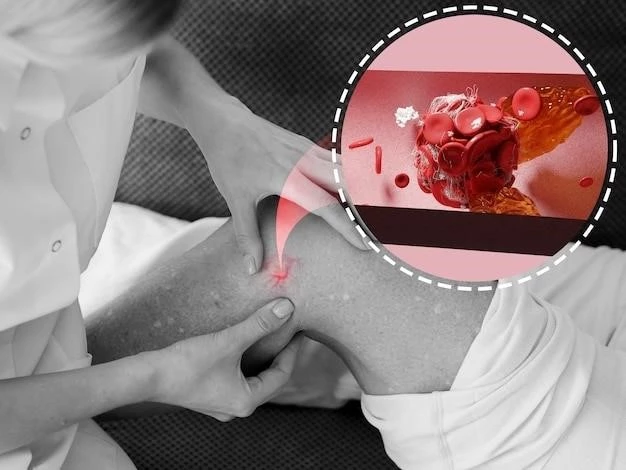Article Plan⁚ Disease ⸺ Tetanus
Overview of Tetanus
Tetanus, also known as lockjaw, is a serious bacterial infection caused by Clostridium tetani bacteria. The bacteria release a toxin that affects the nervous system, leading to muscle stiffness and spasms; Tetanus is characterized by jaw cramping, muscle stiffness, and difficulty swallowing.
The infection is commonly contracted through a wound or injury that introduces the bacteria into the body. Symptoms may take days to weeks to appear after exposure. Without timely treatment, tetanus can be life-threatening.
Treatment for tetanus typically involves wound care, medication to control muscle spasms, antibiotics to target the bacteria, and supportive care to manage complications. Prevention is key, with vaccination being highly effective in protecting against tetanus.

Understanding the causes, symptoms, and treatment options for tetanus is crucial for early intervention and better outcomes for those affected by this preventable but potentially fatal disease.
Causes of Tetanus
Tetanus is caused by the bacterium Clostridium tetani found in soil, dust, and animal feces. The spores of the bacteria can enter the body through a wound or injury, leading to tetanus infection. The bacteria release a toxin affecting the nervous system, causing muscle stiffness and spasms.
Common ways of contracting tetanus include puncture wounds, burns, surgical procedures with contaminated instruments, animal bites, splinters, or any break in the skin through which the bacteria can enter. Lack of immunization or incomplete vaccination increases the risk of developing tetanus.
Prevention through vaccination is essential to protect against tetanus, as the bacteria thrive in environments with little oxygen, making it a persistent threat. Understanding the causes of tetanus highlights the importance of proper wound care and timely vaccination to prevent this potentially serious infection.
Symptoms of Tetanus
Tetanus presents a range of symptoms, including jaw cramping, muscle stiffness, and painful muscle spasms throughout the body. Patients may experience difficulty swallowing, seizures, fever, and increased sweating. Other common signs include irritability, drooling, and hand or foot spasms.
Left untreated, tetanus can lead to severe complications such as breathing difficulties, changes in blood pressure and heart rate, and potential fatality. It is crucial to seek medical attention if experiencing these symptoms, particularly if they follow a recent injury or wound, as timely treatment is essential for managing the infection effectively.
Diagnosing Tetanus
Diagnosing tetanus involves assessing a patient’s medical history, including recent wounds or injuries, and conducting a physical examination to look for specific signs and symptoms. Healthcare providers may also perform laboratory tests to confirm the presence of the Clostridium tetani bacteria.
Typical symptoms such as muscle stiffness, spasms, jaw cramping, and difficulty swallowing aid in the diagnosis. Early detection is crucial to prevent complications. Treatment includes wound care, medications to target the bacteria and toxins, and support for respiratory function and symptom management.
Understanding the diagnostic process for tetanus is essential for timely intervention and effective management of this potentially severe bacterial infection.
Treatment Options for Tetanus
When it comes to treating tetanus, wound care is essential to prevent further bacterial growth. Healthcare teams focus on protecting the patient’s ability to breathe and providing supportive care. Medications are administered to alleviate symptoms, target the bacteria, counteract the bacterial toxin, and enhance the immune response.
Common medications for tetanus treatment include Metronidazole and Penicillin G, which are effective in combating the infection. Treatment typically lasts 7 to 10 days, with the disease progressing over about two weeks and recovery extending for approximately one month.
Early diagnosis and treatment play a critical role in managing tetanus and preventing potential complications. Understanding the available treatment options is key to ensuring effective care for individuals affected by this serious bacterial infection.
Prevention of Tetanus
Preventing tetanus is primarily achieved through vaccination. The tetanus vaccine, often given as part of the DTaP or Tdap vaccines, provides protection against the bacteria that cause tetanus.
Proper wound care is essential to prevent tetanus infection. Cleaning wounds thoroughly, applying antiseptic, and seeking medical attention for any significant injuries help reduce the risk of bacterial entry.
Regular boosters, typically every 10 years٫ help maintain immunity against tetanus. Prompt vaccination after exposure to potentially contaminated wounds is crucial to prevent the development of tetanus symptoms.
Understanding the importance of vaccination and wound care is key in preventing tetanus, a serious and potentially life-threatening bacterial infection.
Complications Associated with Tetanus
Tetanus can lead to severe muscle spasms, breathing difficulties, and potentially fatal outcomes if left untreated. Complications may include changes in blood pressure and heart rate, along with symptoms like drooling, excessive sweating, fever, irritability, swallowing difficulties, and muscle spasms in the hands or feet.
Diagnosing tetanus involves evaluating a patient’s history of injuries or wounds and recognizing specific signs and symptoms. Treatment focuses on wound care, ensuring respiratory function, and administering medications to alleviate symptoms, target the bacteria, counteract bacterial toxins, and enhance immune responses.
Understanding the potential complications associated with tetanus underscores the importance of prompt diagnosis, treatment, and vaccination to prevent serious health risks and adverse outcomes.
Tetanus in History
In history, tetanus has been a known and feared disease due to its severe symptoms and high mortality rate. The ancient Greeks and Romans recognized the condition, attributing it to the rust on weapons causing muscle contractions and stiffness.
During the 19th century, advancements in medical understanding led to the identification of Clostridium tetani as the bacteria causing tetanus. Treatment methods evolved, including the use of antitoxins for prevention and management of the disease.
Notable historical figures, such as soldiers during wars where wound contamination was prevalent, were at high risk of developing tetanus. Early vaccination efforts and improved wound care practices have significantly reduced the incidence of tetanus in modern times.
Medications for Tetanus
When it comes to treating tetanus, essential medications play a critical role in addressing the symptoms and combating the bacterial infection. Metronidazole, typically administered intravenously every six to eight hours, is the preferred treatment for tetanus. Additionally, Penicillin G, given intravenously every four to six hours, serves as a safe and effective alternative medication for tetanus.
The recommended treatment duration for tetanus typically ranges from 7 to 10 days. These medications target the bacteria٫ counteract the toxins produced by the bacteria٫ alleviate symptoms such as muscle stiffness and spasms٫ and boost the overall immune system response to aid in recovery.
Natural Remedies for Tetanus
While tetanus treatment typically involves medication and wound care, certain natural remedies may help support recovery. Herbal supplements like garlic, echinacea, and turmeric are known for their antimicrobial and immune-boosting properties.
Homeopathic remedies such as Hypericum and Ledum are believed to help reduce muscle spasms and inflammation. Additionally, maintaining a healthy diet rich in vitamins and minerals can support the body’s immune system in fighting the bacterial infection that causes tetanus.
Although natural remedies can complement traditional treatment, it is crucial to consult healthcare professionals before using them to ensure they are safe and effective for individual cases of tetanus.
Duration of Tetanus Symptoms
Typically, symptoms of tetanus may start to appear about a week after an injury occurs. It is essential to get a tetanus booster shot within 48 hours of a wound to prevent complications. Untreated tetanus can lead to long-term issues such as airway obstruction, heart failure, muscle damage, and brain damage.
The disease progresses over roughly two weeks, with symptoms ranging from headache to muscle spasms, especially in the jaw area. Recovery from tetanus can extend for approximately a month. Early detection, prompt treatment, and following vaccination recommendations play key roles in managing tetanus effectively and minimizing its impact on health.
Importance of Timely Tetanus Vaccination
Timely tetanus vaccination plays a crucial role in preventing the potentially severe effects of the disease. The tetanus vaccine, typically administered as part of the DTaP or Tdap vaccines, helps protect individuals against the bacteria that cause tetanus.
Receiving a tetanus booster shot within 48 hours of a wound or injury is vital to prevent the development of tetanus symptoms. Untreated tetanus can lead to serious complications, including airway obstruction, heart failure, muscle damage, and brain damage.
Understanding the importance of timely tetanus vaccination underscores the significance of proactive healthcare measures in safeguarding against this potentially life-threatening bacterial infection.
Frequently Asked Questions about Tetanus
Q⁚ What happens if you don’t get a tetanus shot within 48 hours?
A⁚ Delaying tetanus vaccination can lead to a higher risk of developing tetanus symptoms, including severe muscle spasms, breathing difficulties, and potentially fatal outcomes if left untreated.

Q⁚ How long do tetanus symptoms last?
A⁚ Tetanus symptoms typically progress over about two weeks, with recovery extending for approximately one month; Early detection and treatment are vital for managing the infection effectively.
Q⁚ What are 4 symptoms of tetanus?
A⁚ Common symptoms of tetanus include jaw cramping, sudden muscle spasms (often in the stomach), painful muscle stiffness throughout the body, difficulty swallowing, and seizures among others.
